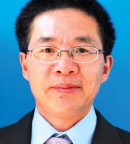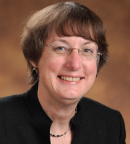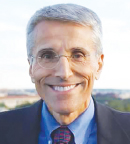The risk of recurrence in estrogen receptor–positive breast cancer is known to continue after 5 years, but just how much is that risk once endocrine therapy is stopped? The Early Breast Cancer Trialists’ Collaborative Group (EBCTCG) has concluded it is “appreciable,” with distant recurrences observed out to 20 years.

Hongchao Pan, PhD
“Our main finding was that even after 5 years of endocrine therapy, recurrences continue steadily over years 5 to 14 and at least to year 20,” said lead investigator Hongchao Pan, PhD, of the University of Oxford, United Kingdom. “Although the risk was less for patients with favorable tumor and nodal status and grade, even those with low-grade T1N0 disease had an appreciable risk of distant recurrence. We need a 20-year perspective on estrogen receptor–positive disease,” he commented.
Without further endocrine therapy, distant recurrence risk in years 5 to 20 was 14% for women with T1N0 disease and much greater for those with T2N0 or node-positive disease.
Dr. Pan led an analysis by the EBCTCG of predictors of long-term recurrence risk after 5 years of endocrine therapy and reported the findings at the 2016 ASCO Annual Meeting.1
As background, Dr. Pan noted that for operable estrogen receptor–positive breast cancer, 5 years of endocrine therapy with tamoxifen and/or aromatase inhibitors reduces breast cancer mortality in years 0 to 4 and years 5 to 14 by about one-third. Extending endocrine therapy past year 5 further reduces risks in years 5 to 14, but it has additional side effects. (See the June 10, 2016, issue of The ASCO Post for coverage of the plenary presentation on additional therapy with letrozole in postmenopausal women with early-stage breast cancer.)
Recurrence in Estrogen Receptor–Positive Breast Cancer
- In estrogen receptor–positive patients who discontinued endocrine therapy, recurrence risk continued to increase, at least out to 20 years post diagnosis.
- The risk is highest in those with T2N2 (4–9 nodes) disease, where the distant recurrence risk is 47% at 20 years.
- Even for those with T1N0 disease, the 20-year risk is 14%.
“To help us decide who should continue endocrine therapy, we need to know the prognosis if no further endocrine therapy is given,” he explained.
Key Findings
The EBCTCG collected data on 46,138 estrogen receptor–positive patients in 91 clinical trials who received only 5 years of endocrine therapy and were alive and disease-free at year 5. Three-quarters of the women had received tamoxifen. Participants were younger than 80 years old and had T1/2 tumors with fewer than 10 positive nodes.
They found that recurrence rates continued steadily throughout the first 20 years (see Table 1). Distant recurrence rates in years 5 to 14 still depended on the initial tumor and nodal stage, grade, and Ki67 (proliferation) score. For T1N0 disease of low, moderate, and high grade, the risks in years 5 to 14 were 5%, 8%, and 10% for distant recurrence and 12%, 15%, and 17% for any recurrence, respectively.

Dr. Pan emphasized the “effect of the additive T+N score” on outcomes, noting that almost 50% of patients with T2N2 (4–9 nodes) disease suffered a recurrence by year 20.
The analysis calculated the following relative risks: for one to three positive nodes, vs negative nodal status, 2.08; for T2N0 vs T1N0, 1.73; for high vs low grade for T1N0 disease, 2.02; for Ki67 > 20% vs 0%–13%, 1.63.
Conversely, in all women (any T/N status), lower risk in years 5 to 20 was predicted by low vs moderate/high grade (adjusted relative risk [RR], 0.7) and Ki67 0%–13% vs ≥ 14% (RR, 0.7). Positive progesterone receptor status was not predictive; there were no data on genotype; and age had little value as a predictor, except for in women younger than 40, who had a 40% increased risk of distant recurrence, revealed Dr. Pan.
Similar associations were seen for breast cancer mortality, but contralateral cancer rates (0.3%/year) were essentially unrelated to these risk factors, he added. ■
Disclosure: Dr. Pan reported no potential conflicts of interest.
Reference
1. Pan H, et al: 2016 ASCO Annual Meeting. Abstract 505. Presented June 6, 2016.



